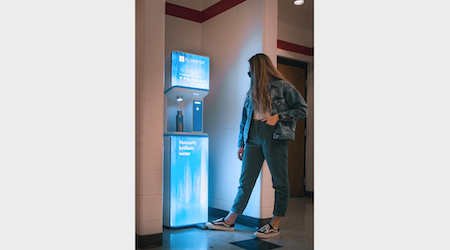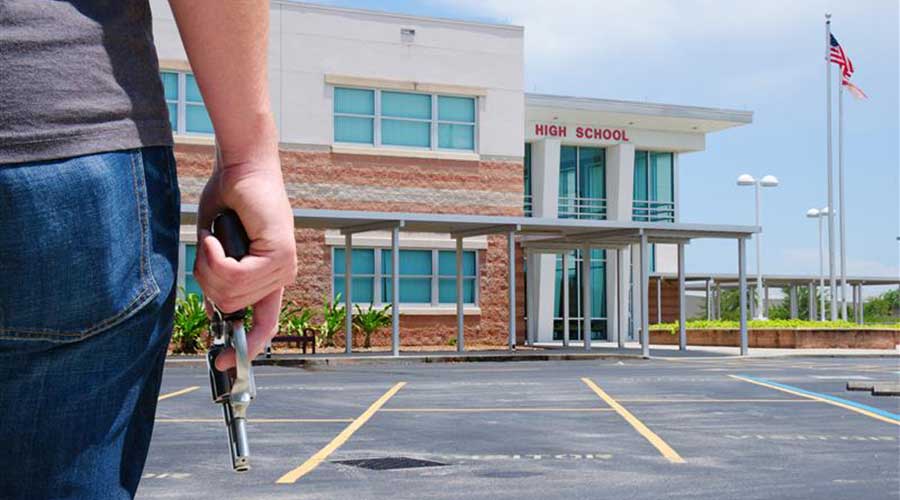School District to Install 170 Touchless, Self-Sanitizing Water Stations
With the health and safety of students in mind, these stations will replace the typical stainless steel fountains and jug dispensers often found in schools.
By Chris Miller, assistant editor
The COVID-19 pandemic is continuing to affect what school systems do to protect student health and safety. For that reason, a southern California school district is adding 170 water refill stations to its facilities. Fontana Unified School District (FUSD) is using these touchless, self-sanitizing stations to replace its communal water fountains and jug dispensers. The CDC’s recommendation to replace high-touch, communal fixtures like water fountains led to FUSD’s decision to search for an alternative clean-water solution. The school district used CARES act funding to upgrade its water safety and quality strategy with a product that also helps it to safely reopen its schools for students, teachers, and staff in the fall.
The school district’s plan to install the water refill stations came about from a board member's belief that every school should have bottle filling stations, according to Matthew Strother, executive director of educational facilities, maintenance, operations, and transportation at FUSD. So the district decided to invest in FloWater refill stations.
Strother handled the coordination of buying and installing the stations. He saw several advantages to using the FloWater refill stations over the typical stainless steel water fountains. The steel water fountains generally have little to no filtration of the water and are very expensive and difficult to install. Strother said they are $2,000 to $3,000 each and require backing to be installed in the walls along with water and drainage framework. The FloWater stations do not need to be mounted to the wall.
“As a school district we have to comply with a division of the state architect for federal compliance of accessibility, so if I were to mount something on a wall I would have to have that reviewed and approved by the state architect, which is a minimum of a three month process and about six right now with the pandemic,” Strother says.
The stations are free-standing and easy to install, connecting to any potable water line within 100 feet. This means that most schools can replace their water fountains with the bottle refill stations in the same place.
Strother says he appreciated the quick and easy installation of the stand-alone water stations.
“I saw it as the best product that I could quickly implement,” he says. “People here have pride in their water so they want to drink the local water. It takes your own tap water and makes it a little better.”
Another advantage over typical water fountains that Strother saw in these stations was that they came with a foot pedal activation device, saving students from having to risk spreading or catching sickness through touch. The water fountains are also ADA accessible with a button where anyone in a wheelchair could come up to a station and use them.
He says he also appreciated the purification technology within the stations. FloWater’s Advanced Osmosis water purification technology removes up to 99.99 percent of all toxins and contaminants in water, including viruses, bacteria, heavy metals like lead and arsenic, chemicals, and microplastics, according to a FloWater press release. The technology also alkalizes and oxygenates the water and adds electrolytes for better hydration. A carbon coconut filter finishes the chilled water for added taste.
For FloWater, schools have always been a focus, according to COO Chris Liccardi. The company has had its stations in schools for years for other reasons besides disease spread prevention.
“Before Covid, it was about limiting plastic waste and better quality water and now it's just kind of heightened the safety aspect,” says Liccardi.
Strother says he sees the water solution upgrade as a necessity when considering the health and safety of students, faculty, and staff.
“Clean air, clean water I just think are must haves for any workplace really,” he says. “They’re not an expensive thing and they show an appreciation to staff and that you care about their well-being. Statistically people are sick less and your student attendance rate goes up.”
Strother says he sees only positive outcomes to investing in clean water solutions and continues to look into more options to make his school district a safe place to return to in the fall.
Chris Miller is assistant editor, Facility Market.
Related Topics:












